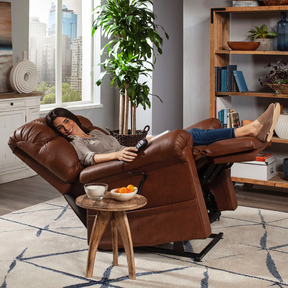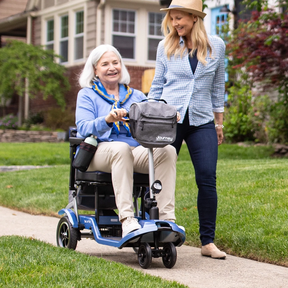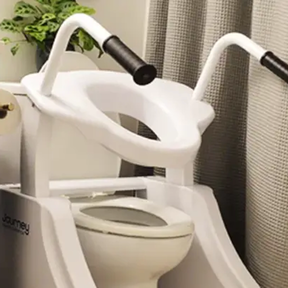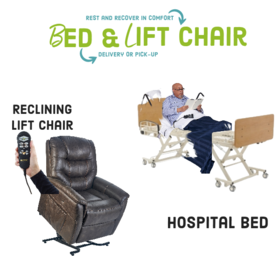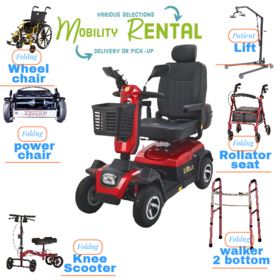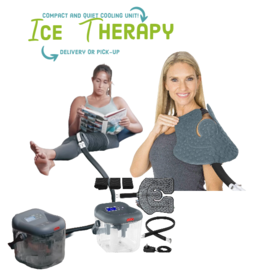Blog The advantages of using an upright walker over a rollator walker
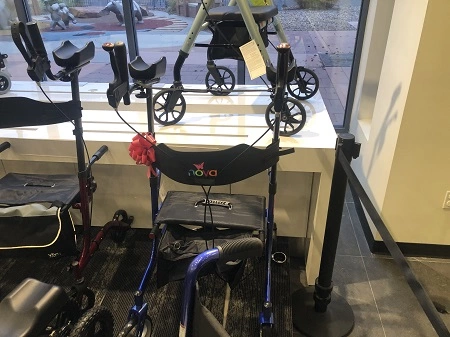
Individuals with disabilities or physical weakness often rely on adult walkers. These devices are particularly beneficial for those recovering from serious illnesses, surgeries, or traumatic events. They are primarily used by the elderly, who typically experience reduced physical activity.
What are the benefits of an Upright Walker?
Compared to crutches, these devices are more efficient and comfortable. This is possible thanks to their extensive support base. An elderly person or a disabled person walks on them much more confidently. To do this, he does not need outside help, which does not cause him to fear falling.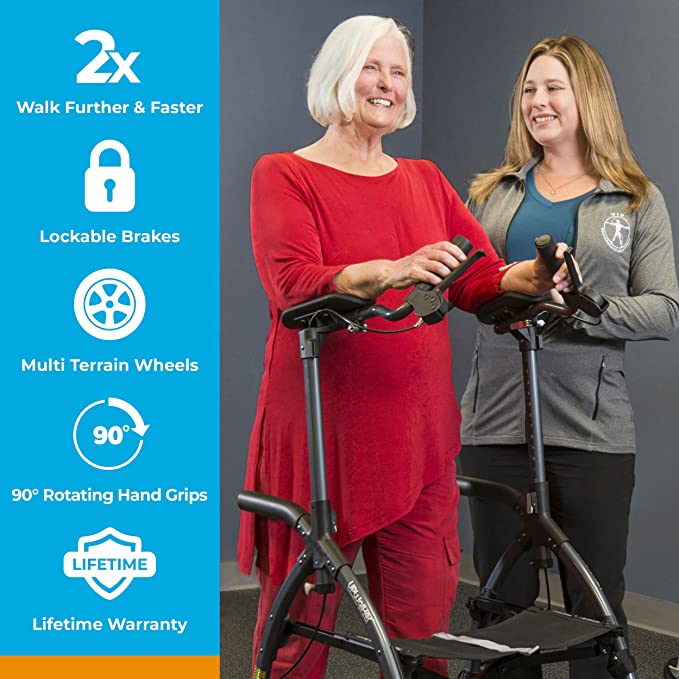
Walkers for disabled people can speed up your rehabilitation. Together with them, the load on the area of the legs and spine is reduced and ideally distributed. A stroke patient who has been bedridden for a long time has weakened muscle tone and needs walking devices.
For safety and convenience, it is important to purchase a walker that is lightweight, reliable, and tailored to your individual needs. You can use them in a medical facility, at home, or while walking down the street.
A walker for the disabled helps older individuals maintain an upright posture, reducing the risk of injury. There is now a wide variety of these products available, allowing for selections tailored to specific conditions. Additionally, walkers aid in developing leg muscles by evenly distributing the load during movement, preventing excessive muscle fatigue and congestion.
Types of Walkers and Where Does Up Walker Fit?
Walkers on wheels: Wheeled walkers feature a pair of front wheels and rear legs for a balance of ease and stability. They facilitate movement by allowing the user to push the walker rather than lift and reposition it, conserving energy and enhancing comfort. Known as pusher walkers, many models come with a folding mechanism that saves space during transportation and storage, adding to their convenience.
Rollators: Rollators are walkers with wheels on all supports, allowing for faster movement without sacrificing stability and support. They feature drum brakes on the handles and foot brakes on the wheels for safe movement, enabling users to securely lock the rollator in place and use it as static support. Also known as gurney walkers, these models are ideal for individuals who can move confidently without additional supports like elbow supports, seats, or axillary supports.
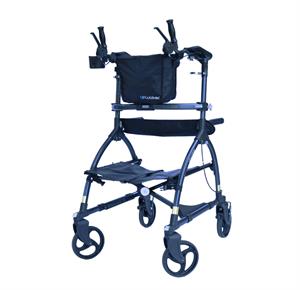 Types of Rollators:
Types of Rollators:
- Simple Rollators (without additional support)
- Rollators With Seat And Bag
- Three-Wheel Rollers
- Walker Stroller
The most common rollators come equipped with a seat and a bag, offering a highly convenient design. These models combine the mobility of a traditional rollator with the added benefit of allowing the user to sit and rest at any time by securely locking the wheels with brakes. The attached bag is perfect for storing personal items or groceries, keeping the user's hands free. These rollators are ideal for individuals who can walk independently without additional body support but tend to tire quickly.
Another type of rollator with maximum maneuverability and ease of movement is the three-wheeled rollator. The same rollators with a bag, but on tricycles with wheels, which increases maneuverability and ease of control.
A stroller walker has been specifically developed for disabled and elderly individuals with weakened bodies. This versatile device combines the features of a wheelchair and a walker, making it ideal for those who have difficulty walking independently. It can be configured as a rollator with a soft seat, four wheels, and two brakes. The stroller walker also includes two bags, adjustable handles, and removable footrests to accommodate the user's or caregiver's height and needs.
Tags
- contest
- event
- supplies
- design
- brand
- video
- Compression
- upright walker
- four wheel walker
- rollator
- wheelchair
- Ostomy
- elegantly
- elegantly
- accessibility
- Mobility
- knee walker rental
- knee scooter sales
- knee scooter
- post operative shoe
- anti-embolic stockings
- pain management
- cryotherapy therapy
- hot cold compress
- compression stockings
- lift chair
- wound Care
- air purifier
- fall prevention
- cushion
- oxygen therapy
- cpap, bipap
- Hospital Bed
- Life Aide
- EMS
- recovery
- splint
- knee brace
- Bathroom
- patient lift
- medical supply
- Wound dressings
- Lightweight Wheelchair
- hospital beds for sale
- sky medical supplies rentals
- compression socks
- Adult Diapers
- Rollator Walker
- Bed Wedge Pillow
- Hospital beds
- Patient Lifts and Slings
- Portable Oxygen Concentrator
- Patient Lift Slings
- knee scooter rental
- folding mobility scooter
- mobility scooter
- medical shoes
- raised toilet seat
- hospital beds for rent
- lift chair recliner
- chair lift
- electric wheelchair
- Power Lift Recliners for Elderly
- Senior Walkers
- Bedside Commodes
- whill wheelchair
- compression hose
- Whill Electric Wheelchairs
- Bariatric Wheelchair
- Recliner Chairs with Lift
- Colostomy Bag
- Crutches
- Medical Wedge Pillow
- skin barrier tape
- Post Surgery Ice Machine
- Bedside Commode
- chair lift recliners
- cane holder scooter
- lift chair prices
- drop arm commode
- rollator walker with ergonomic seats
- Hospital Bed Rental
- Wheelchair Tray
- Golden Technologies Lift Chair
- Nova GetGo Junior Rollator
- power lift recliners
- Knee Scooters and Crutches:
- stand up walker for seniors
- stand up walker as seen on TV
- Women's Walking Canes
- Knee Immobilizers
- Bed Wedge Pillow
- Medical Supply Stores
- Sit to Stand Lifts
- Grab Bars
- Compression Gloves
- incontinence bed pads
- Lift Reclining Chair
- Knee Walker Scooters
- Hernia Belt Near You
- Mobility Scooter Stores Near Me
- Folding Knee Walker
- Oxygen Concentrator Store
- Inogen Battery
- Electric Bed Frames
- Placing Lift Chair
- diaper brief
Related Posts
Get weekly articles in your inbox on the latest medical supply news, exclusive deals, and helpful health tips.
